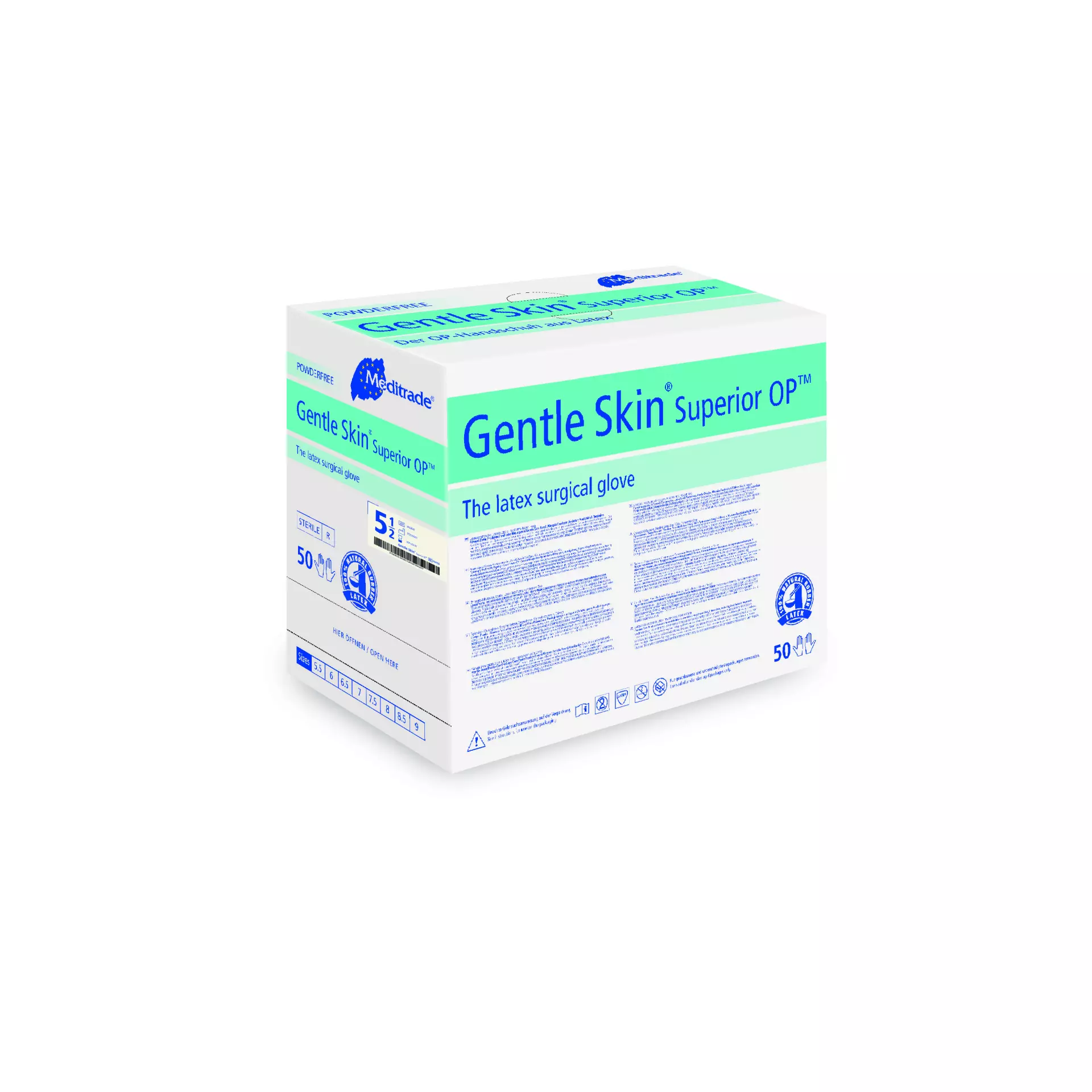
Meditrade Gentle Skin Superior OP™ Latex Glove, Powder-Free
Meditrade Gentle Skin Superior OP™ Latex Glove, Powder-Free
5 / 5

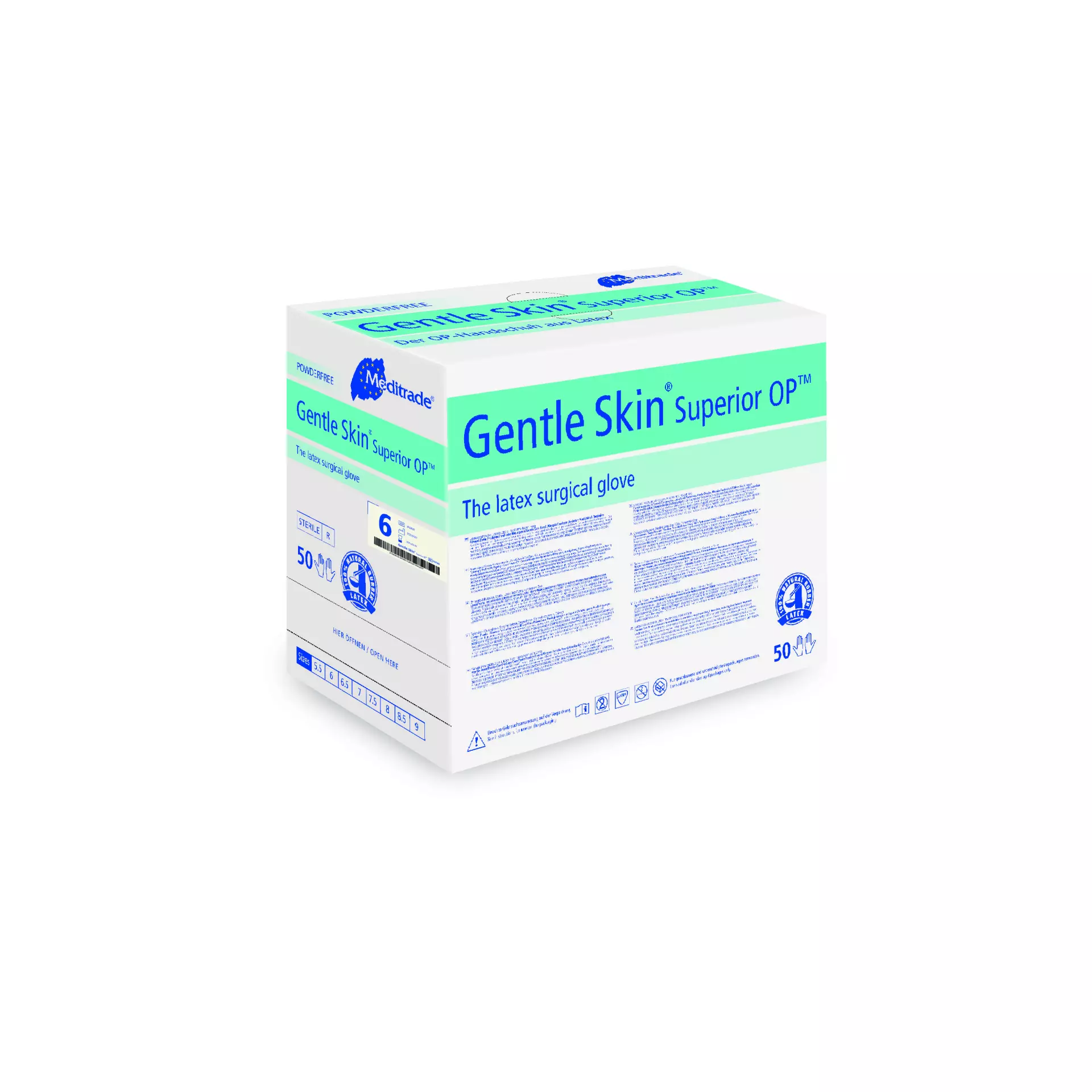
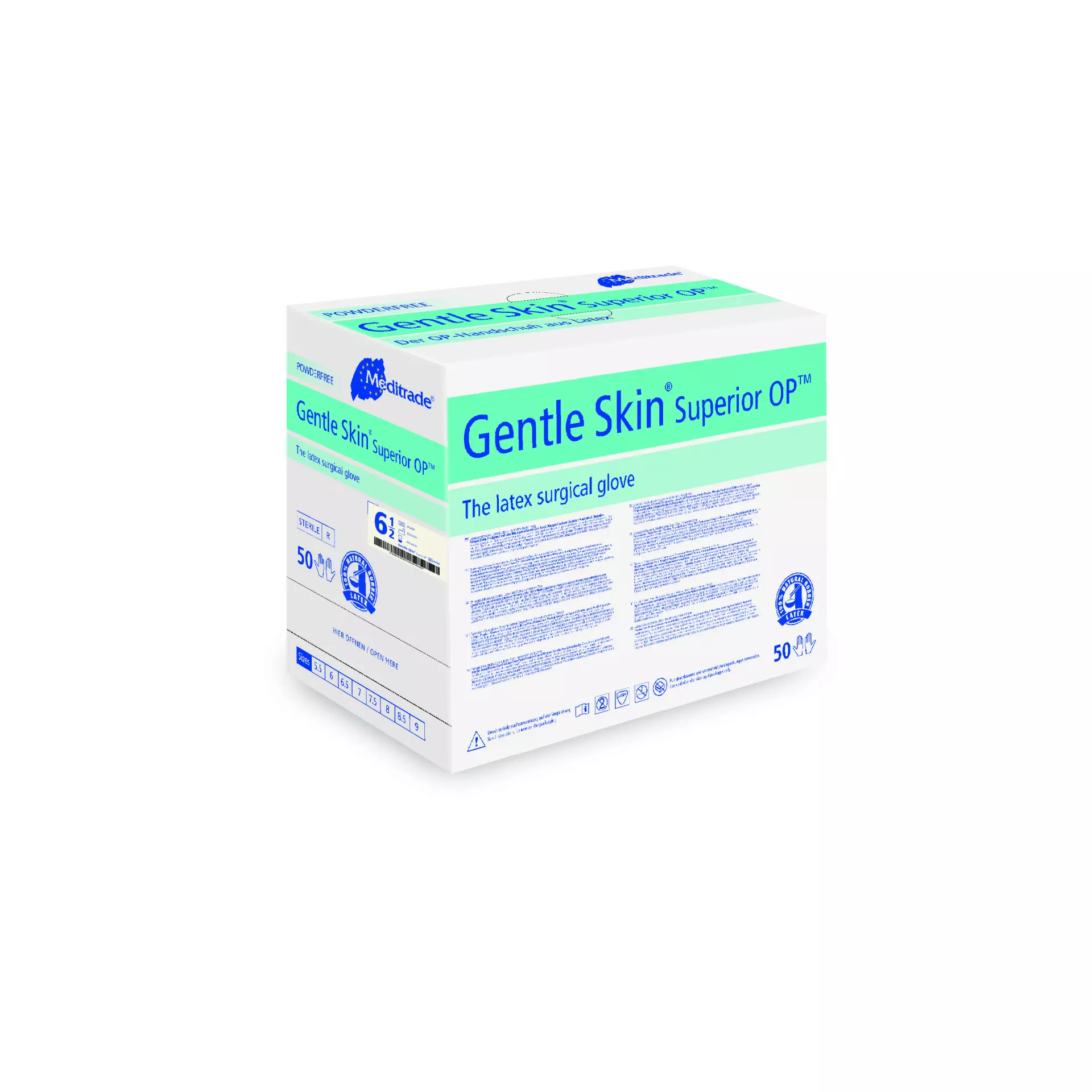



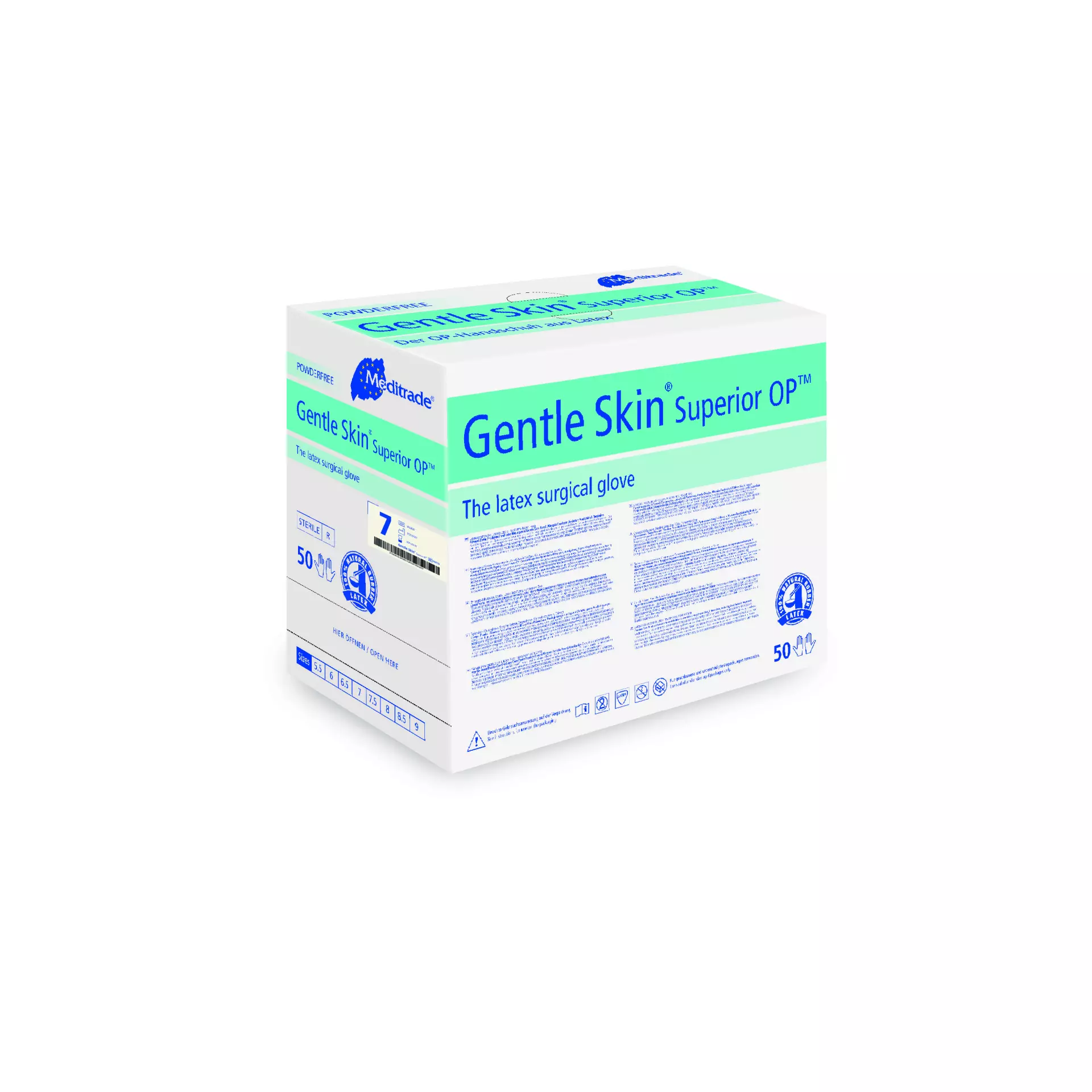
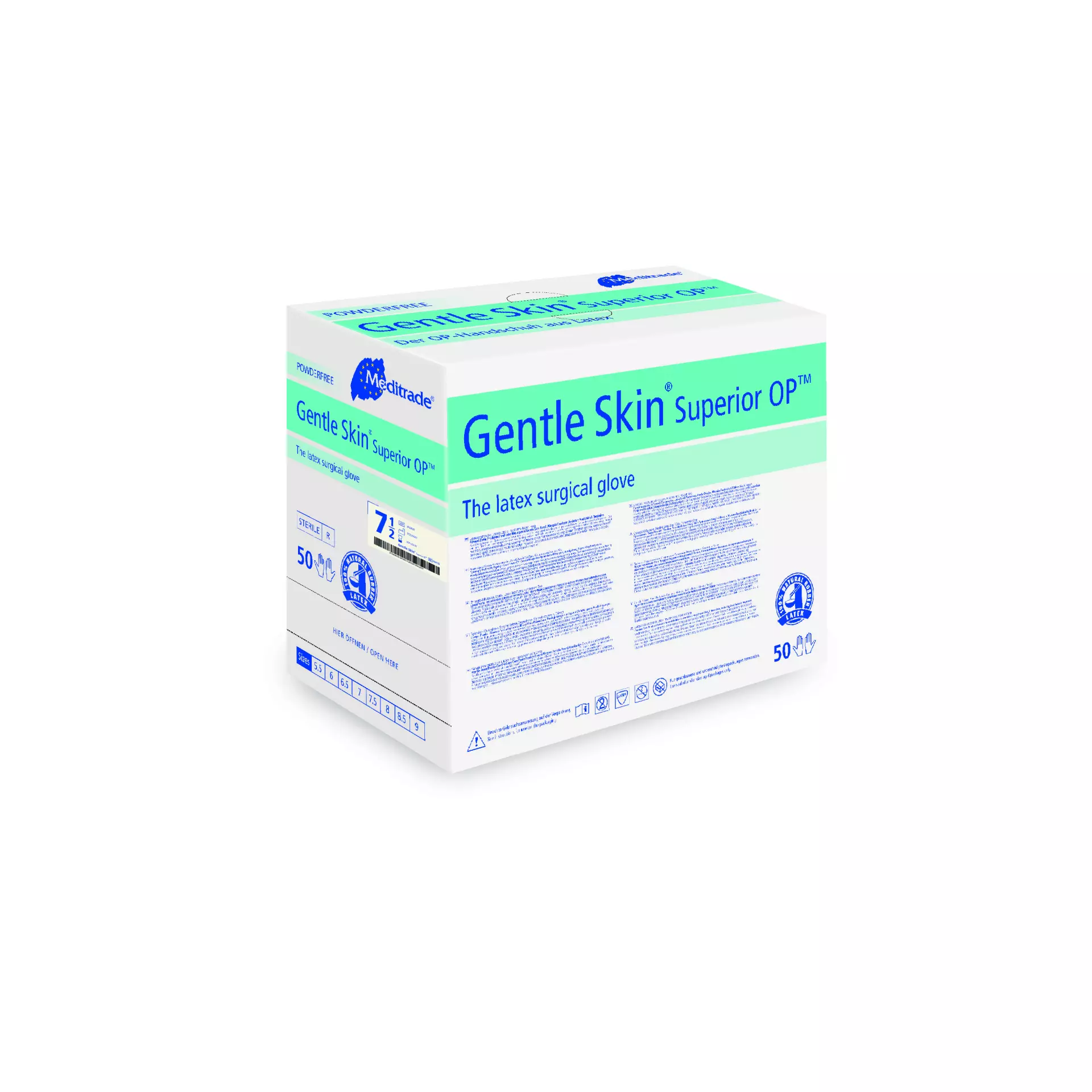
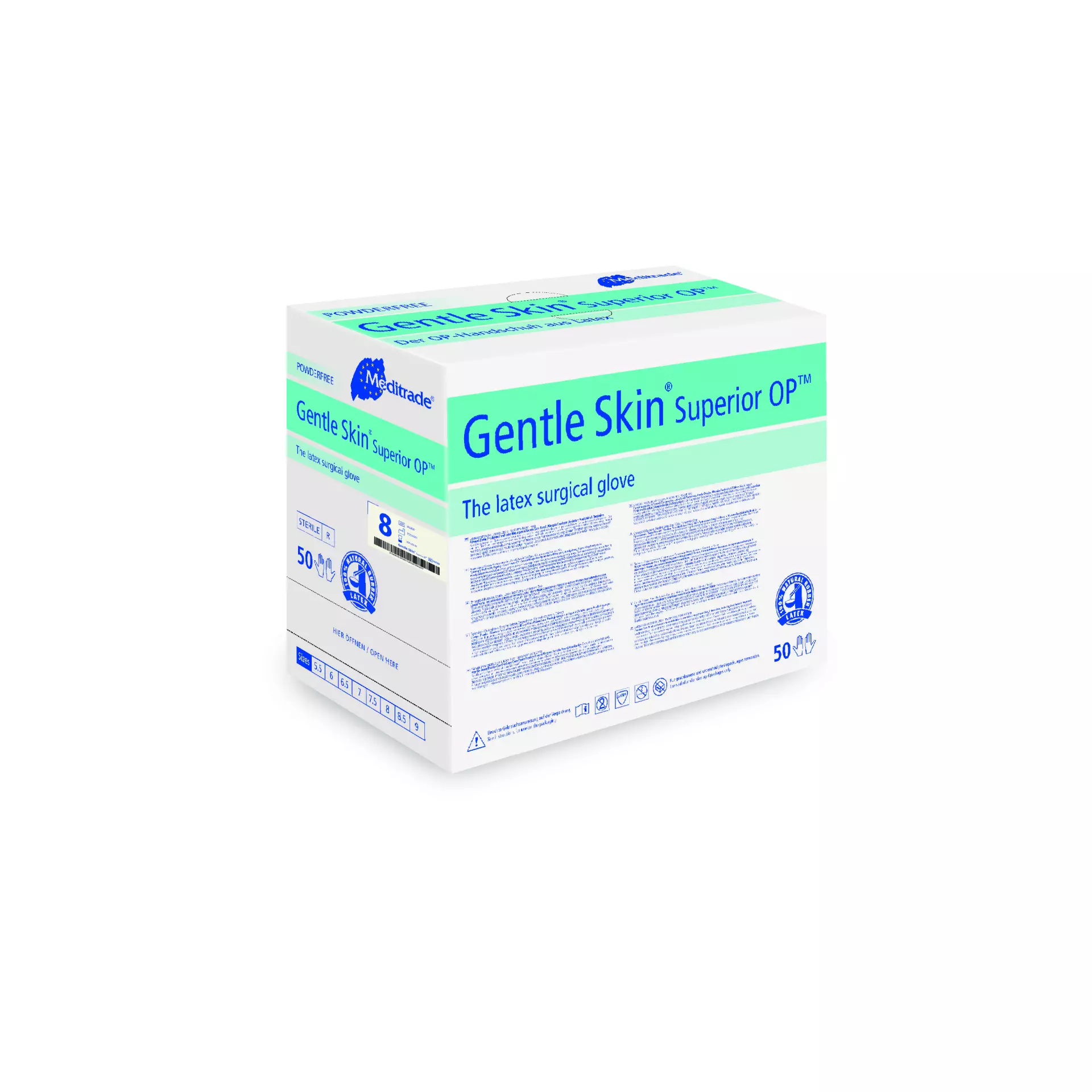
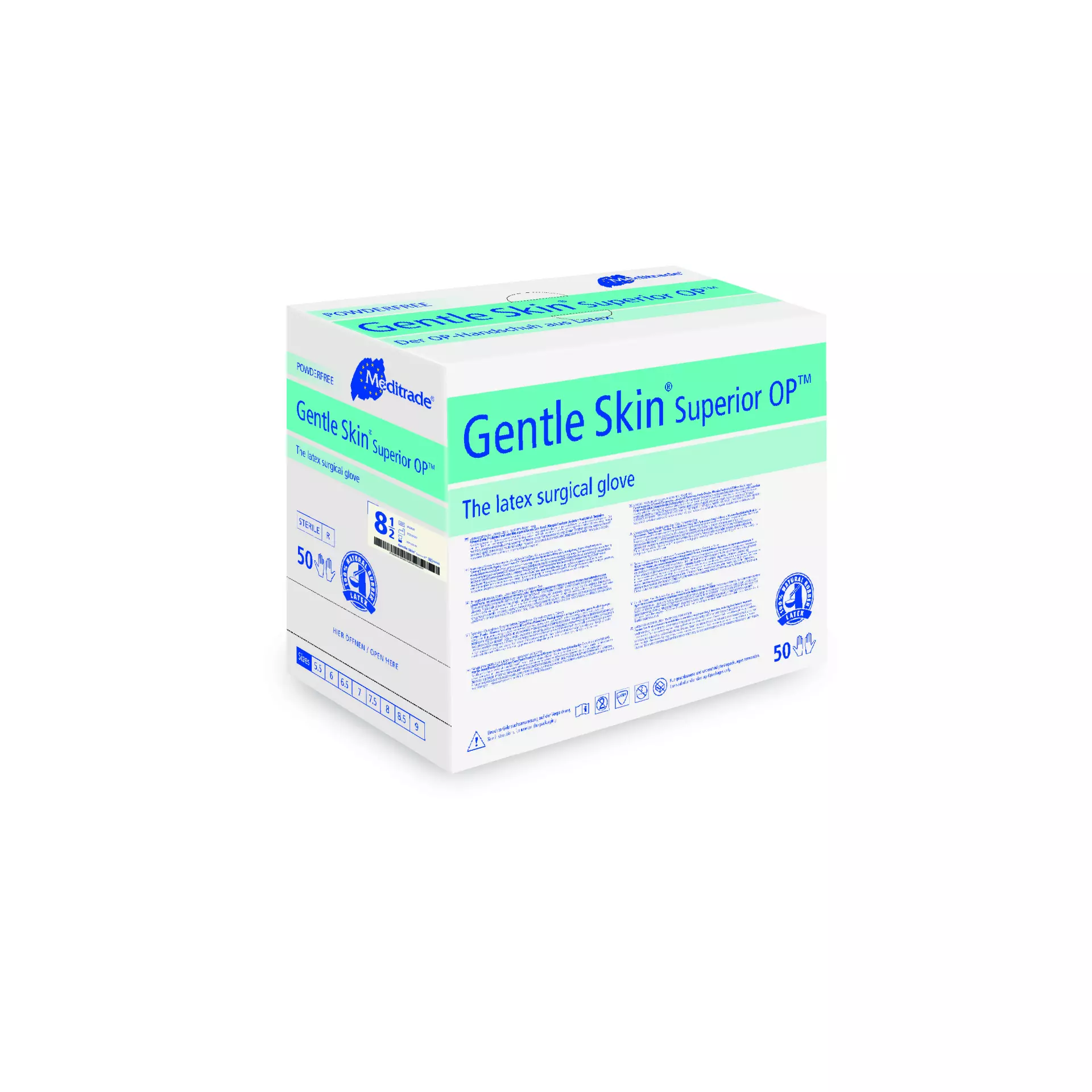
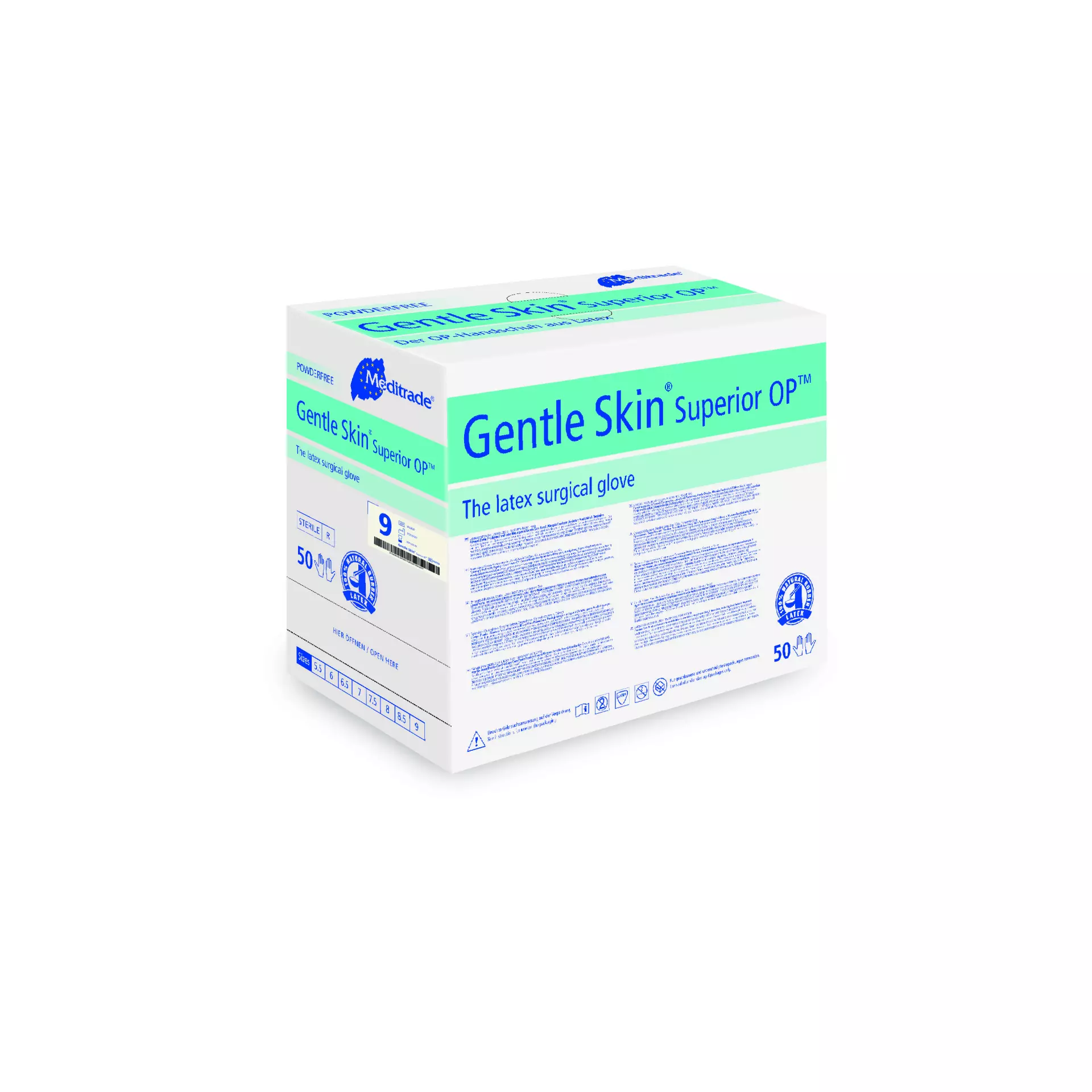
Features You'll Love
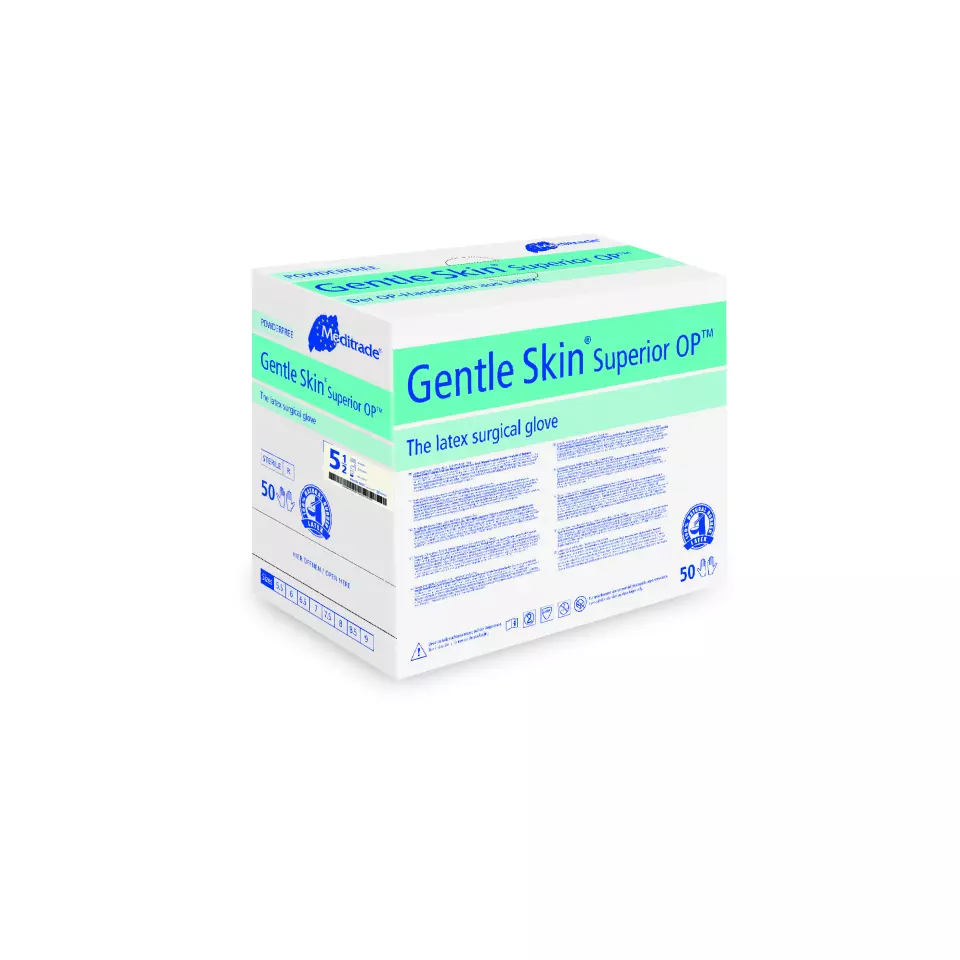
Glove Features · Sterile
Ensures ultimate cleanliness and protection against contamination for your most sensitive needs.
Ensures ultimate cleanliness and protection against contamination for your most sensitive needs.
Ensures ultimate cleanliness and protection against contamination for your most sensitive needs.
Meditrade
Gentle Skin Superior OP™ Latex Glove, Powder-Free, 4 x 50 pcs
Gentle Skin Superior OP™ Latex Glove, Powder-Free, 4 x 50 pcs
5 / 5
123,11 €
Price per 4 packages (200 pcs)
61,55 € / 100 pcs
Free delivery
Features You'll Love

Glove Features · Sterile
Ensures ultimate cleanliness and protection against contamination for your most sensitive needs.
Ensures ultimate cleanliness and protection against contamination for your most sensitive needs.
Ensures ultimate cleanliness and protection against contamination for your most sensitive needs.
Product description
The product description has not been specified
The product description has not been specified
The product description has not been specified
Indicates whether gloves contain powder on the interior surface to aid donning, affecting ease of use and contamination control requirements.
The texture of the glove exterior, affecting grip strength and handling capability for different tasks and working conditions.
The visual appearance of the glove material, ranging from basic colors to specialized options for different professional and aesthetic preferences.
The design of the wrist opening, affecting ease of putting gloves on, comfort, and how securely they stay in place during use.
Indicates the maximum percentage of defective gloves acceptable in quality testing, with lower numbers representing higher quality standards.
Measures how far the glove extends up the wrist and forearm, determining the level of coverage and protection provided during use.
Measures the material thickness at the fingertips, affecting tactile sensitivity, dexterity, and protection level during use.
Describes the surface texture of the fingertip area, affecting grip strength and tactile sensitivity during use.
Long sleeves offer extended protection, keeping your arms clean and dry from splashes and contaminants, even during immersion.
Complete finger coverage ensures full protection and hygiene for your hands, maintaining dexterity for all tasks.
Easily wear on either hand, ensuring quick protection and less waste.
Ensures ultimate cleanliness and protection against contamination for your most sensitive needs.
Your go-to gloves for diverse tasks, offering reliable protection and convenience across many applications.
Measures the thickness of the glove's wrist/forearm extension, affecting durability, tear resistance, and protection level during use.
- Food Service
- Slip Resistant
- Medical Protection
- Antimicrobial Protection
- Hand Protection
Medical devices and healthcare products with the EN ISO 11137 rating are tested for the effectiveness of their radiation sterilization to ensure they are free from harmful microorganisms. This means consumers can trust that these products are safe and effective for use, greatly reducing the risk of infection.
Protective gloves with the EN 374-4:2013 rating are tested for their resistance to degradation by chemicals. This measures changes in the glove material, like swelling or hardening, ensuring the glove maintains its protective qualities when exposed to hazardous substances.
Test results
This glove's material resists breaking down when in contact with specific chemicals. This helps protect you from physical changes to the glove like swelling, cracking, or softening that could compromise your safety during use.
Gloves with the EN ISO 374-1:2016 rating are tested for resistance against dangerous chemicals and microorganisms, including penetration, permeation, and degradation. This means you can choose gloves designed to protect your hands from specific chemical hazards, ensuring safer use in various tasks.
Gloves with the EN 374-5:2016 rating are tested for resistance to penetration by bacteria and fungi, and potentially viruses. This means the gloves provide a protective barrier against microorganisms, helping to keep your hands safe from harmful biological agents.
Test results
This product protects you from bacteria and fungi. It passed leakage tests, making it a reliable barrier when handling materials where these micro-organisms are a risk, such as in cleaning or laboratory work.
Gloves with the EN 374-2:2014 rating are tested for their resistance to penetration, ensuring liquids and microorganisms do not leak through tiny holes or imperfections. This means the gloves provide an effective barrier, protecting your hands from direct contact with hazardous chemicals and microbes.
Test results
This product has passed a leak test to ensure it is a waterproof and effective barrier against liquids, bacteria, and fungi. This protects your hands from contact with harmful microorganisms in various work environments.
Protective clothing, gloves, and footwear materials with the EN 16523-1:2015 rating are tested for resistance to permeation by hazardous liquid chemicals, specifically how long it takes for a chemical to pass through the material. This ensures the product provides a dependable barrier, offering a measurable level of safety when handling dangerous liquids.
Test results
This product’s material resists liquid chemical breakthrough. It is tested for how long it takes a chemical to move through the material on a molecular level, offering protection for a specified time during continuous contact.
Medical gloves with the EN 455-3:1999 rating are tested for biological safety, specifically evaluating levels of proteins and leachable substances. This ensures the gloves minimize potential allergic reactions and harmful effects for both the wearer and patient, providing peace of mind.
Test results
This product has been tested for biological safety to ensure it is safe for skin contact. It minimizes the risk of adverse reactions from chemicals, latex proteins, and other residues used during manufacturing.
Medical gloves with the EN 455-2:2009 rating are tested for their physical properties, such as strength, stretch, and dimensions. This ensures the gloves are durable and reliable, providing effective protection against cross-contamination for both the user and the patient.
Test results
This glove has been tested for physical strength and durability to ensure it won't tear or break easily during use. It provides reliable protection from cross-contamination for both the wearer and the patient in medical situations.
Medical gloves with the EN 455-1:2000 rating are tested for freedom from holes, primarily using a water leak test. This ensures the gloves provide a reliable, intact barrier, protecting both the user and patient from cross-contamination during medical procedures.
Test results
This product meets a quality standard for medical gloves, ensuring a very low probability of pinholes. This provides a reliable barrier against bacteria and viruses, making it suitable for tasks requiring protection from cross-contamination.
Single-use medical gloves with the EN 455-4:2009 rating are tested for their shelf life, ensuring they maintain properties like strength and barrier integrity over time. This means the gloves will remain effective and safe, providing reliable protection against infections until their expiration date when stored correctly.
Medical devices with the ISO 13485:2016 rating are tested for a quality management system that ensures consistent safety, quality, and regulatory compliance throughout their lifecycle. This provides assurance that the product is reliably produced to high international standards for patient use.
Test results
This product was made under a quality management system that ensures consistent design, production, and distribution. This focuses on the safety, performance, and regulatory compliance of medical devices throughout their entire lifecycle, from design to disposal.
Food safe refers to the safety of food products that are used or consumed by people. In Europe, food safety is regulated by the European Union (EU) and the European Food Safety Authority (EFSA). These organizations set standards and requirements for food products to ensure they are safe to eat. To be considered "food safe" in Europe, a product must meet these standards and be free of harmful substances. This includes being free of harmful bacteria, pesticides, and other contaminants. Food products that do not meet these standards cannot be sold or used in the EU.
PPE stands for "personal protective equipment." PPE Category 3 refers to equipment that is complex and provide the highest level of protection such as powered respirators, SCBA, and full body suits. In Europe, PPE Category 3 must meet certain safety standards set by the European Union, which means that it must be designed and manufactured to protect the user without causing harm. Companies that make or sell PPE must prove that it meets these standards. They also must have a quality management system in place, have to be audited regularly by a notified body and have to have a technical documentation.
Free delivery for all Meditrade products